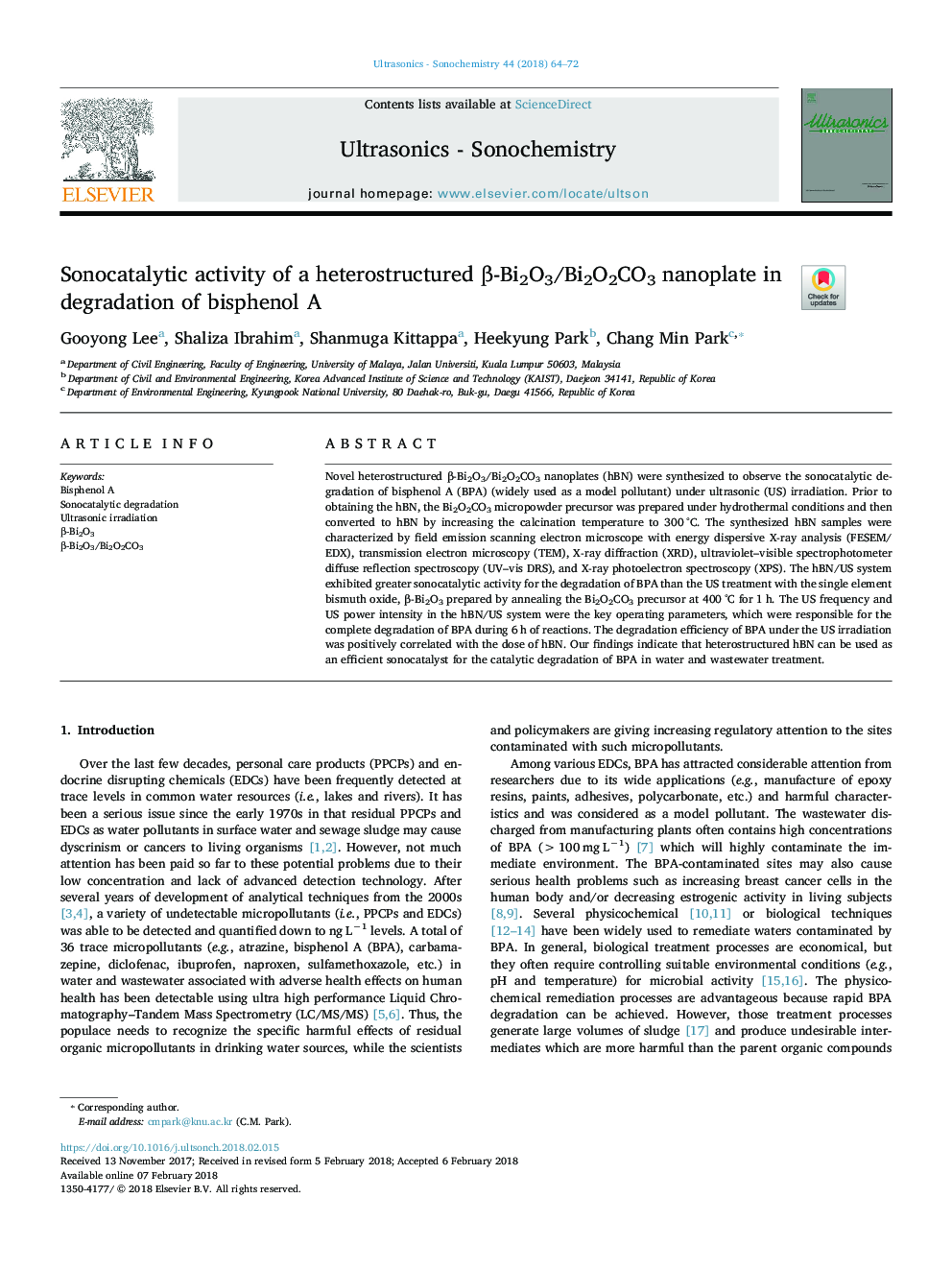| Article ID | Journal | Published Year | Pages | File Type |
|---|---|---|---|---|
| 7702641 | Ultrasonics Sonochemistry | 2018 | 9 Pages |
Abstract
Novel heterostructured β-Bi2O3/Bi2O2CO3 nanoplates (hBN) were synthesized to observe the sonocatalytic degradation of bisphenol A (BPA) (widely used as a model pollutant) under ultrasonic (US) irradiation. Prior to obtaining the hBN, the Bi2O2CO3 micropowder precursor was prepared under hydrothermal conditions and then converted to hBN by increasing the calcination temperature to 300â¯Â°C. The synthesized hBN samples were characterized by field emission scanning electron microscope with energy dispersive X-ray analysis (FESEM/EDX), transmission electron microscopy (TEM), X-ray diffraction (XRD), ultraviolet-visible spectrophotometer diffuse reflection spectroscopy (UV-vis DRS), and X-ray photoelectron spectroscopy (XPS). The hBN/US system exhibited greater sonocatalytic activity for the degradation of BPA than the US treatment with the single element bismuth oxide, β-Bi2O3 prepared by annealing the Bi2O2CO3 precursor at 400â¯Â°C for 1â¯h. The US frequency and US power intensity in the hBN/US system were the key operating parameters, which were responsible for the complete degradation of BPA during 6â¯h of reactions. The degradation efficiency of BPA under the US irradiation was positively correlated with the dose of hBN. Our findings indicate that heterostructured hBN can be used as an efficient sonocatalyst for the catalytic degradation of BPA in water and wastewater treatment.
Related Topics
Physical Sciences and Engineering
Chemistry
Chemistry (General)
Authors
Gooyong Lee, Shaliza Ibrahim, Shanmuga Kittappa, Heekyung Park, Chang Min Park,
